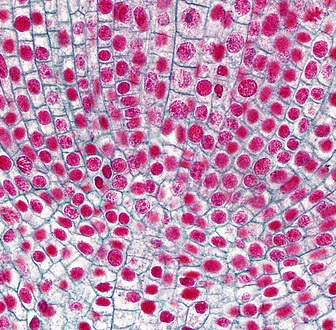Meristems and Growth.
 What is a meristem and how is it that a plant can keep growing for the whole of its life? Micropropagation using the plant meristems as a source of undifferentiated cells has become an important method of producing plants for agriculture and for conservation. This short lesson is in the style of a web-quest and uses a student worksheet to help students structure their notes.
What is a meristem and how is it that a plant can keep growing for the whole of its life? Micropropagation using the plant meristems as a source of undifferentiated cells has become an important method of producing plants for agriculture and for conservation. This short lesson is in the style of a web-quest and uses a student worksheet to help students structure their notes.
Lesson Description
Guiding Question
What is the function of cell division in plant meristems?
Activity 1: What is a plant meristem?
A meristem is an area containing undifferentiated cells which divide by mitosis throughout the life of the plant. The elongation and subsequent specialisation of these cells is controlled by expression of genes in the cells themselves and in response to plant hormones, like auxin.

Activity 2: What is micropropagation and where is it used?
Complete the activities on the worksheet below using the weblinks links in this widget.
Write your own definition on the sheet at the end of the activity
Activity 3: What are the benefits of micropropagation?
Complete the table of benefits and uses of micropropagation on the ![]() micropropagation student worksheet
micropropagation student worksheet
Teachers notes
These activities are all completed on the students worksheet using the links in the widget. There is a web address on the worksheet so that students can access the pages directly.
A short introduction to the growth of plants and the role of meristems might be useful with some students.
This activity could also be used as a homework task.
There are model answers available on this page Micropropagation model answers
There is an excellent protocol for the growth of cauliflower plants using micropropagation from the people at SAPS but this will take much more time.
There are also some detailed teacher notes which go beyond the IB syllabus here.

 IB Docs (2) Team
IB Docs (2) Team
